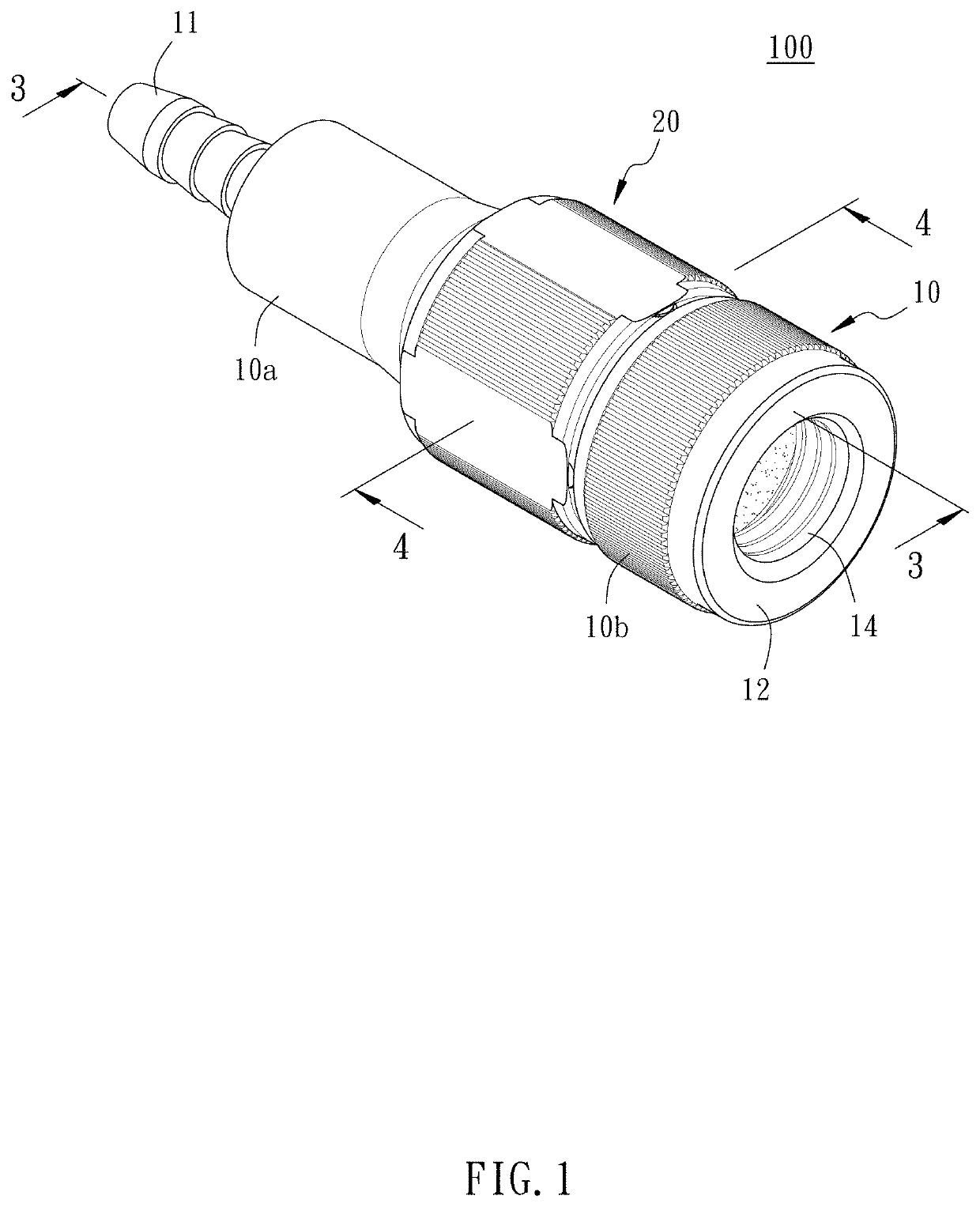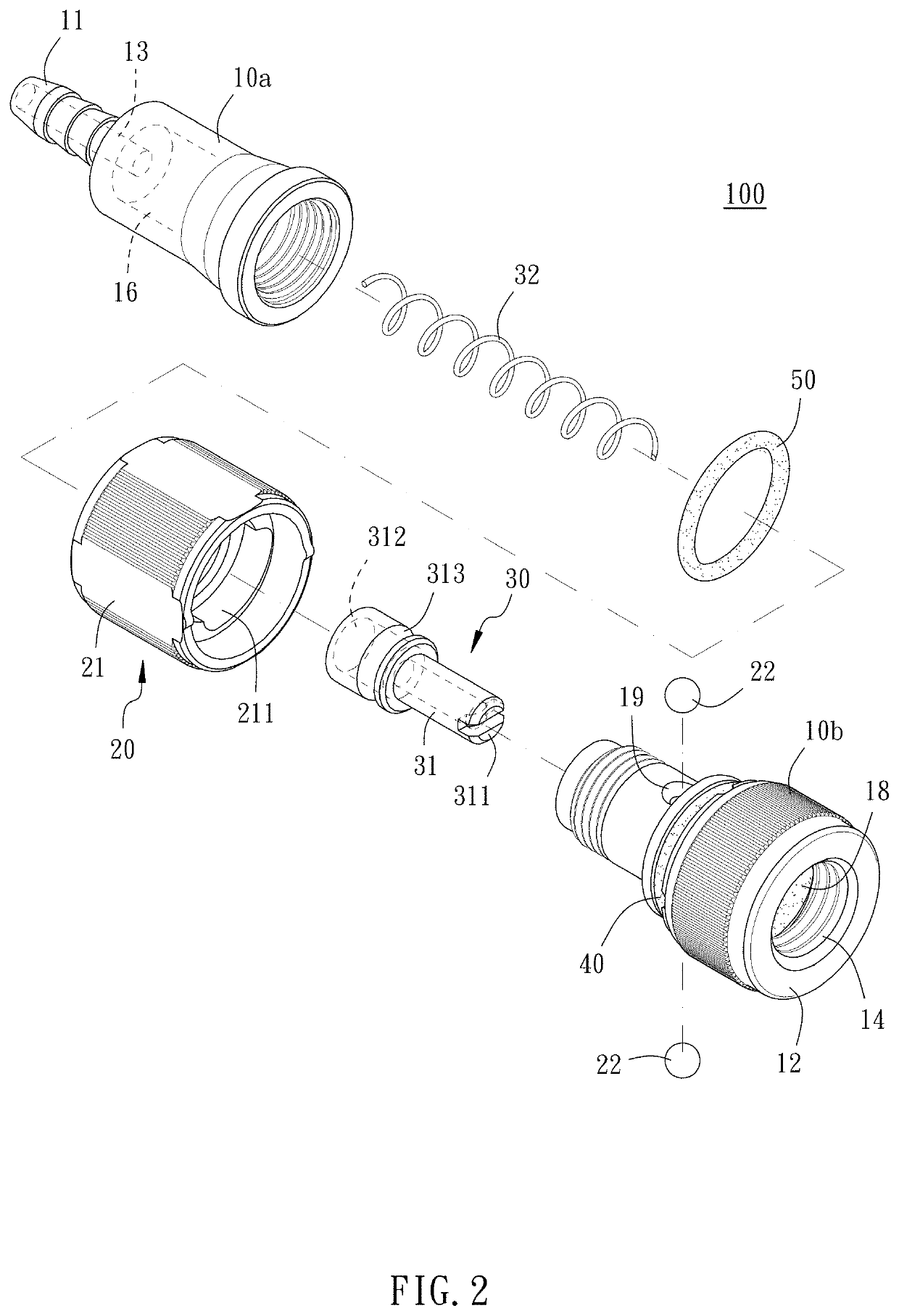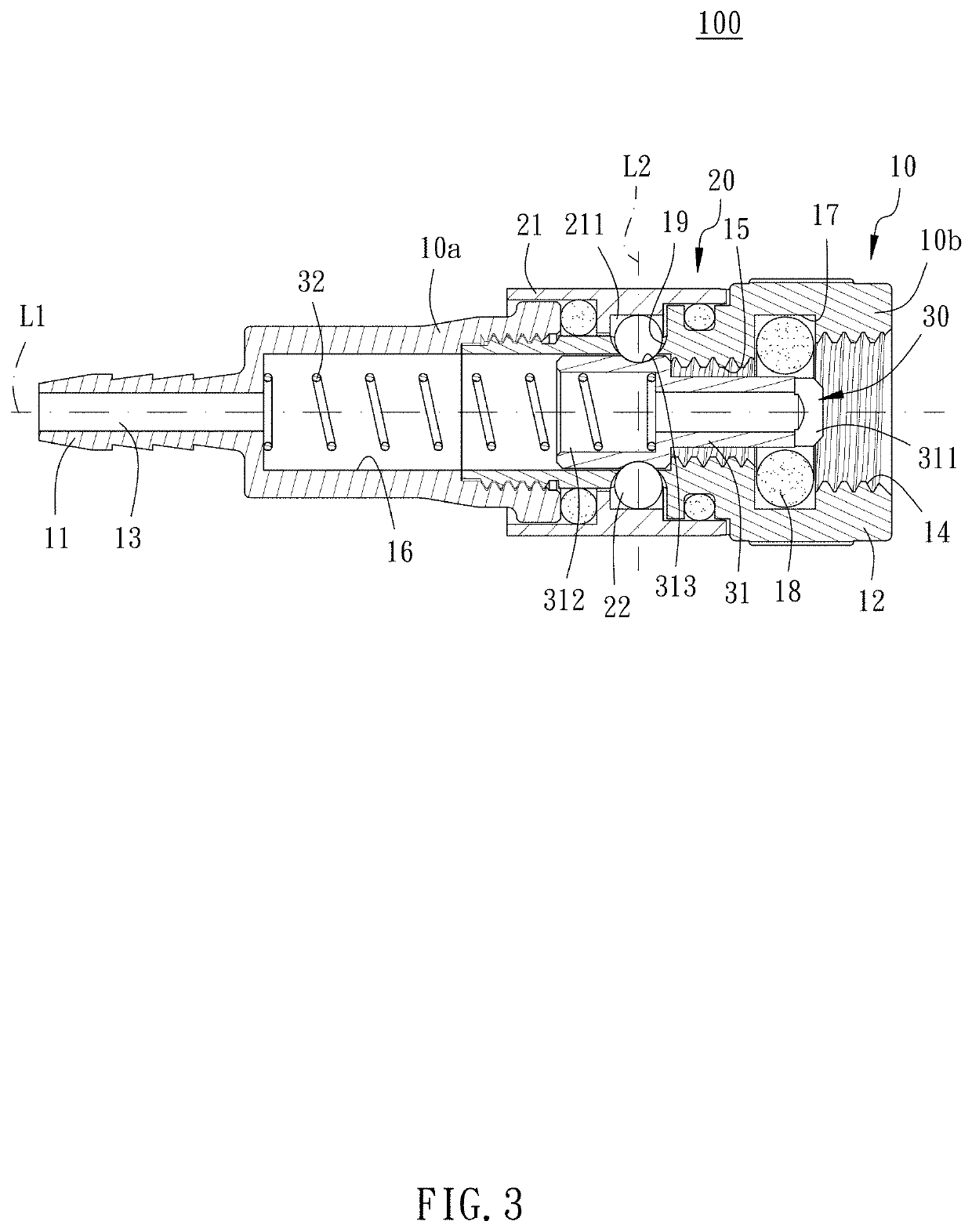Double-use nozzle adapter
- Summary
- Abstract
- Description
- Claims
- Application Information
AI Technical Summary
Benefits of technology
Problems solved by technology
Method used
Image
Examples
first embodiment
[0018]Referring to FIG. 1 through FIG. 7, in the present invention, a double-use nozzle adapter 100 includes a main body 10, a switch unit 20, and a needle unit 30. The needle unit 30 is installed within the main body 10 and controlled by the switch unit 20 to make the main body 10 connectable to a Schrader valve 1 or a Presta valve 2.
[0019]The main body 10 has a first end 11 and a second end 12 opposite to the first end 11 along a first axis L1. The first end 11 has a vent 13 communicated to an external pressurized air source (such as an air pump). The second end 12 has a first threaded hole 14 and a second threaded hole 15 that are made coaxial to each other. The second threaded hole 15 and the vent 13 are communicated to each other through an action chamber 16 located therebetween. The first threaded hole 14 has an inner diameter greater than the inner diameter of the second threaded hole 15, and the second threaded hole 15 is located between the first threaded hole 14 and the ac...
second embodiment
[0029]FIG. 8 and FIG. 9 depict a double-use nozzle adapter 100 according to the present invention. Therein, a connector 10a of a main body 10 includes a connecting section 10a1 and a vertical section 10a2. The connecting section 10a1 is linked to an attachment 10b. An action chamber 16 is located between the attachment 10b and the connecting section 10al. The vertical section 10a2 is vertically connected to the connecting section 10al. A vent 13 is provided on the vertical section 10a2. The main body 10 such configured has an alternative form for convenient use.
PUM
 Login to View More
Login to View More Abstract
Description
Claims
Application Information
 Login to View More
Login to View More - R&D
- Intellectual Property
- Life Sciences
- Materials
- Tech Scout
- Unparalleled Data Quality
- Higher Quality Content
- 60% Fewer Hallucinations
Browse by: Latest US Patents, China's latest patents, Technical Efficacy Thesaurus, Application Domain, Technology Topic, Popular Technical Reports.
© 2025 PatSnap. All rights reserved.Legal|Privacy policy|Modern Slavery Act Transparency Statement|Sitemap|About US| Contact US: help@patsnap.com



